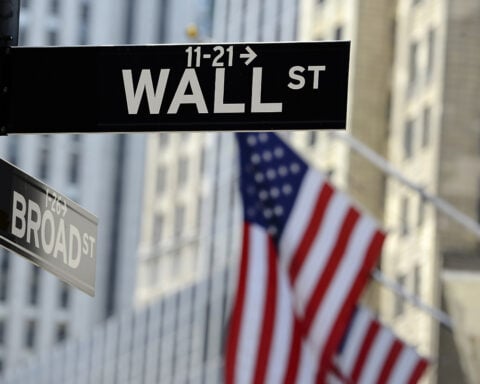Wall Street witnessed an upswing, with dwindling stresses from the oil and bond sectors contributing to the positive movement.
By midday, the S&P 500 had ascended by 0.8%, despite wavering earlier. The Dow Jones Industrial Average increased by 188 points (0.6%), at 33,738 as of 11:45 a.m. Eastern time. Concurrently, the Nasdaq composite had surged by 0.9%.
Following its peak this year, crude oil prices dropped, relieving stocks. The bond market also saw a slight decline in Treasury yields, which benefited significant tech corporations.
Significant contributors to the S&P 500’s rise included Nvidia with a 2% gain and Meta Platforms, which went up by 2.5%.
Despite these gains, Wall Street is still bracing for its most challenging month this year. This comes as the market adjusts to an era of prolonged high-interest rates. The Federal Reserve has raised its core interest rate to combat inflation, hinting at fewer rate reductions next year.
Previously, investors relied on the Fed to reduce rates during uncertain times. Elevated rates intentionally slow economic growth, negatively affecting stocks and other investments. On the contrary, reduced rates can invigorate financial markets.
Increased duration of higher rates has elevated Treasury yields. The 10-year Treasury yield touched 4.67%, its highest since 2007, before settling at 4.60%. Meanwhile, the two-year Treasury yield dropped slightly from 5.14% to 5.08%.
Recent economic reports revealed fewer unemployment claims than anticipated, indicating a robust job market. This has stimulated consumer spending, staving off a potential recession, yet possibly amplifying inflationary pressures.
The U.S. economy reportedly expanded at a 2.1% annual rate over the summer, a tad below forecasts but reflecting consistent growth into Q3. The trajectory for the year-end remains to be seen.
These reports reaffirm the Fed’s stringent stance on interest rates, which many call a “hawkish” policy approach.
Mike Loewengart of Morgan Stanley stated that unless there’s a significant shift, investors should brace for a hawkish Fed, extended high rates, and potential market fluctuations.
The economy and Wall Street face other hurdles besides prolonged high rates, including potential U.S. government shutdowns. However, previous shutdowns haven’t severely impacted financial markets.
In other updates, U.S. crude oil prices retreated slightly, with a barrel priced at $92.92. Meanwhile, Brent crude dipped to $93.99 per barrel.
Notable movements in Wall Street stocks include a 5.8% spike in Peloton Interactive shares after announcing a partnership with Lululemon Athletica and a 5.5% increase in Trimble after a joint venture announcement with AGCO. Conversely, Micron’s shares dipped by 1.8%, even with promising quarterly results.
Hong Kong’s Hang Seng dropped by 1.4% after China Evergrande Group shares were suspended internationally. The real estate giant is embroiled in a debt crisis, affecting China’s economic trajectory.
Global financial markets, led by Wall Street, continue to navigate the complexities brought about by oil and bond market fluctuations, interest rate decisions, and geopolitical factors. Investors remain vigilant, gauging the interplay of domestic and international factors. As Wall Street adjusts to evolving dynamics, the underlying strength of the global economy will determine its trajectory in the months to come.







